Study: Do EVs Really Cost Less to Run Than Internal Combustion Cars?

With the volume having been turned down on just about every business sector imaginable, automakers have spent most of this year explaining how supply chain shortages are impacting production and making promises about electric vehicles. However, the rhetoric surrounding electrification has gotten so aggressive that it’s fast becoming another contentious issue, leading to vicious arguments as people square up to take sides. Part of this is due to the enterprising way in which zero-emission vehicles are being marketed and subsequently embraced by world leaders that don’t know jack about the manufacturing or the environment. Much of the discourse surrounding electrification (pro or con) lacks nuance and leads to businesses promising whatever they can in an effort to obtain your unquestioning belief.
For example, EVs are frequently promoted as boasting substantially lower operating costs due to there being no reliance on liquid fuel. Though finding the truth actually requires one to make a comparative analysis while taking into account how, where, and what you’re driving. There’s even a new study out from the Anderson Economic Group (AEG) attempting to determine the true savings of swapping to an EV where the researchers ultimately decided gasoline-powered cars were actually easier on the wallet. However, that likewise requires loads of clarifying context and conditional factors.
But let’s start on the matter of bias.
For every iPhone-loving soy boy that flies off the handle when they hear someone besmirch the good name of EVs, there’s a toothless bumpkin ready to insult your masculinity for thinking there’s any enjoyment to be had with electrification. Your author’s only real beef with zero-emission vehicles is that they’re not technically zero emissions and have yet to reach economic parity with their combustion-dependent brethren. Though I do have to confess that there’s no EV on the market that could possibly facilitate my lifestyle, which includes extremely long-distance drives several times per month.
Anderson Economic Group may have biases of its own. The Michigan-based economic consulting firm (with ties to GM, Ford, and Honda) could have been hired to sully EVs, though it’s not represented by the CEO. Patrick Anderson owns a Porsche Taycan and seems to believe electrification is indeed a boon for the environment. While we’re dubious of any claims suggesting buying a weekend toy like the Taycan is actually helping to win the war on pollution, Mr. Anderson doesn’t come across as someone who outright despises EVs either.
“They are a wonderful driving experience. But at the same time, they’re an enormous burden in time and in energy in finding chargers and getting them charged,” he told Yahoo News while promoting the paper. “And you’re not really saving much in terms of charging costs … you may be paying more.”
From Yahoo:
A mid-priced internal combustion car that gets 33 miles per gallon would cost $8.58 in overall costs to drive 100 miles at $2.81 a gallon, the study found. But a mid-priced EV, such as Chevrolet Bolt, Nissan Leaf or a Tesla Model 3, would cost $12.95 to drive 100 miles in terms of costs that include recharging the vehicle using mostly a commercial charger.
On a yearly basis, assuming the mid-priced cars traveled 12,000 miles, it would cost $1,030 to drive an internal combustion car and $1,554 to drive an EV.
For luxury cars that get 26 miles per gallon and use premium gas at $3.25 a gallon, the cost to drive an internal combustion car 100 miles is $12.60. The cost to drive a luxury EV, such as a Taycan, Tesla Model S or X or Jaguar I-Pace, is $15.52 to travel 100 miles. That is using mostly commercial chargers.
“That’s apples to apples and includes the extra EV taxes, the commercial charging and the home charging and the allowance of driving to a gas station, which, for most Americans, is very short compared to driving to a commercial charger for an EV owner,” Anderson said.
But everything remains highly conditional, affected by numerous factors both within and beyond your control. For example, finding a fast charger in the middle of Iowa while you’re traversing unfamiliar territory can be a nightmare. But those who refuse to stray far from home can simply plug their vehicles in at home and bookmark nearby charging points as necessary. Anderson Economic Group seems aware of this fact and attempted to account for this by making sure it clarified that it accounted for the differences in cost between home charging (including the necessary hardware), commercial charging, tax rebates, and “deadhead miles” — the latter of which accounts for energy/money lost while hunting for a charging station.
Vehicle pricing was also taken into account, with researchers noting that EVs typically cost quite a bit more than their internal combustion counterparts (before government incentives). However less easily judged is the time/money lost while waiting for vehicles to charge and the fact that electricity prices vary significantly more than gasoline. Still, AEG claims it did its best to bring them under consideration before deciding that it technically costs a little more to run an electric vehicle.
Using Michigan fuel prices (which are typically a smidgen lower than the national average) AEG surmised that the “direct monetary cost to drive 100 miles in an internal-combustion (ICE) vehicle is between $8.58 and $12.60. EVs were calculated as occupying the space between $12.95 and $15.52 per 100 miles.”
But those averages were taken from a comparison that cited entry, mid, and luxury level internal combustion vehicles (all of which used commercial fueling) vs mid-to-luxury level EVs (one of which prioritized home charging). The obvious explanation is that most EVs sold do tend to carry around higher price tags. In fact, the cheapest EVs are in the mid-$30,000 range and the rest are inarguably luxury vehicles. But this doesn’t make for an apples-to-apples comparison. It’s likewise strange to think that someone would purchase an electric car and then spend most of their time not charging it at home. However, living in New York has shown me that there are a staggering number of Tesla owners who actually do park their vehicles on the street and recoup the brunt of their energy from dedicated commercial charging.
AEG likewise assumes that EV owners make more money than someone who buys an ICE. While this happens to be true, researchers attempt to account for this by linking the time wasted during charging to potentially lost wages. But they cannot pit EV drivers making an estimated $70,000 salary against the national average of $52,000 (or the median $34,250) per year and hope for a fair comparison. So it just bumped up everyone’s pay to the maximum, perhaps foolishly. Worse yet, it assumes that the minutes lost every day to EV charging impacts time you could have spent working — resulting in a secondary expense for high-earners that probably don’t get charged by the hour anyway.
That all makes it seem as if the study is anti-EV propaganda to counter the pro-EV propaganda coming out of the industry. But things are again presumably more complicated than that. AEG made it clear that it tried to sample the market organically and ended up getting survey respondents and study data pertaining more toward people that owned Porsche and Tesla products than someone who picked up a secondhand Chevrolet Bolt. Charging data was also amassed from energy companies like ChargePoint and online forums where people have a tendency to gripe about worst-case scenarios. Meanwhile, home charging was given less priority due to it being harder to source reliable data.
However, that played a major factor in the study. Truth be told, most EV owners have told me that they don’t actually feel like they’ve saved any money using commercial chargers and find the changing rates frustrating. But those gripes usually dissipate when you encounter someone who doesn’t rack up a lot of miles and does all their charging at home. Anderson stated that most research comparing EVs to ICEs focuses entirely on home charging to present and presume substantially lower maintenance fees to present a best-case scenario.
AEG’s objective was to take into account as many factors as possible without becoming useless. While that’s been accomplished, the conditional nature of the factors going into its calculations severely complicates things. The study even tries to make provisions for the lack of infrastructure that’s currently hamstringing electrification and how batteries behave in colder environments or middle states of charge. Anderson asserts that EV operating costs will come down as batteries improve and charging points become closer, faster, and more prevalent. It’s admirable but the multitude of factors being taken into account still undermines the generalized assessments AEG is attempting to make.
And that should be the takeaway. All of this stuff is so intensely conditional that there’s no easy answer. From our vantage, it seems like the Anderson Economic study does favor ICEs. But it remains useful as a comparative tool to use against the pro-EV studies that are frequently oversimplified. Our advice would be to read both and attempt to make determinations on a case-by-case basis and be mindful of the contributing factors to the AEG report. Commercial charging isn’t the godsend it seemed a few years ago and with less-predictable pricing that’s likely to only go up, it’s looking more like the electricity vs gasoline debate could be a wash.
[Image: Virrage Images/Shutterstock]

A staunch consumer advocate tracking industry trends and regulation. Before joining TTAC, Matt spent a decade working for marketing and research firms based in NYC. Clients included several of the world’s largest automakers, global tire brands, and aftermarket part suppliers. Dissatisfied with the corporate world and resentful of having to wear suits everyday, he pivoted to writing about cars. Since then, that man has become an ardent supporter of the right-to-repair movement, been interviewed on the auto industry by national radio broadcasts, driven more rental cars than anyone ever should, participated in amateur rallying events, and received the requisite minimum training as sanctioned by the SCCA. Handy with a wrench, Matt grew up surrounded by Detroit auto workers and managed to get a pizza delivery job before he was legally eligible. He later found himself driving box trucks through Manhattan, guaranteeing future sympathy for actual truckers. He continues to conduct research pertaining to the automotive sector as an independent contractor and has since moved back to his native Michigan, closer to where the cars are born. A contrarian, Matt claims to prefer understeer — stating that front and all-wheel drive vehicles cater best to his driving style.
More by Matt Posky
Latest Car Reviews
Read moreLatest Product Reviews
Read moreRecent Comments
- MaintenanceCosts Depends on the record of the company developing them. If it’s got a record of prioritizing safety over years of development, I’ll be fine with it, and I’ll expect it to be less risky than typical idiot human drivers. If it’s a “move fast and break sh!t” outfit like Tesla or Uber, no way.
- Kwik_Shift_Pro4X No thanks. You'll never convince me that anybody needs this.
- Kwik_Shift_Pro4X I'd rather do the driving.
- SCE to AUX EVs are a financial gamble for any mfr, but half-hearted commitment will guarantee losses.BTW, if there were actual, imminent government EV mandates, no mfr could make a statement about "listening to their customers".
- Zachary How much is the 1984 oldmobile (281)8613817

















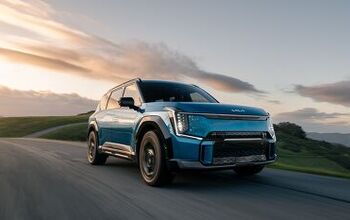
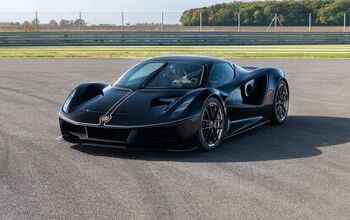
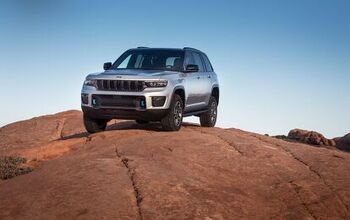
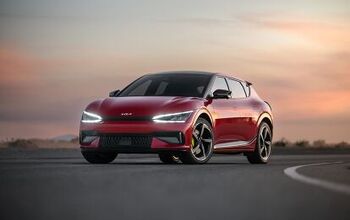


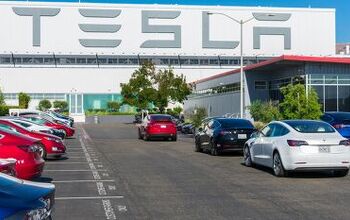


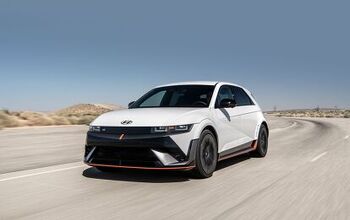


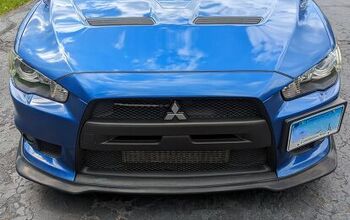
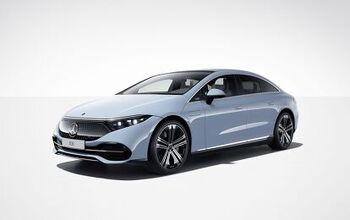
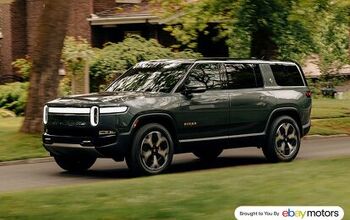


Comments
Join the conversation
"you’ve fallen for the big lie' Which "big lie"? So many to chose from! That's an epidemic worse than Covid. Well, unless one thinks Covid is a "big lie". LOL All kidding aside. That is the biggest problem facing any democracy, no one can agree on what actually is the truth.
As it is, the actual study assumes a mid-level EV averages 4.2 miles per kWh. I don't know of any EV that averages that in real world driving. Even if one did, that would be based on 90+% of driving in absolute optimal weather conditions. It's hardly as simple as dividing the EPA range estimate by the battery capacity. Accounting for charging losses and inclement weather range loss, I expect the average to be more like 3.5 miles per kWh, if not less. That would significantly affect the annual fuel cost.